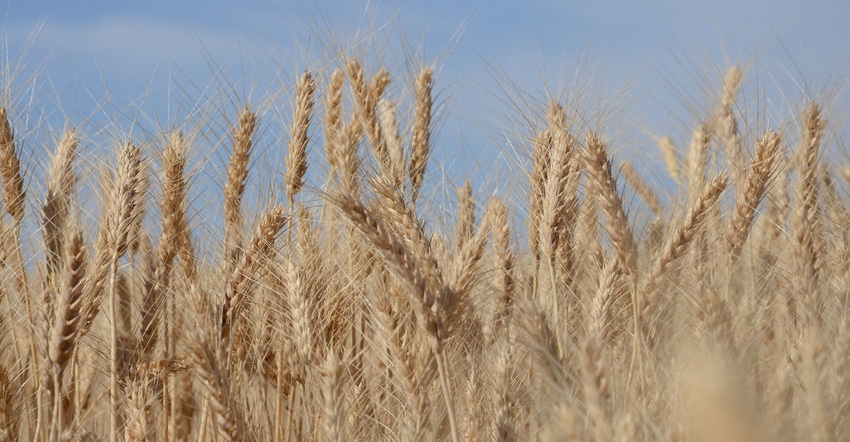October 12, 2020

Jeff Koscelny has a full-time job, and it’s about “bringing new, innovative wheat varieties to the Western United States,” he says. “It’s a full-time job.”
He’s the commercial lead for wheat at Bayer, which owns Westbred, a seller of wheat seed in the West. The company has seen success with its market approach of “counted seed” sales and a focus on certified-seed-only (CSO) products, which Koscelny says help support future work on improving varieties.
“We’ve got some exciting new products across the winter wheat-growing areas this year, some hard red winters and some products that knock it out of the park,” he says. The keys are disease resistance and yield, but also protein levels and milling and baking attributes, which are competitive areas for Westbred.
But the Westbred market approach also means a change in perspective. More growers are seeing the value of certified-seed-only sales, which mean you’re buying fresh seed every year. “It’s an opportunity to work with the seed supplier to decide the best genetics for their farm,” he says. “They can see the value of the purchase, and they can change each year, or they can purchase the same genetics as last year. The idea is really resonating with many growers.”
He points to another value, for larger operators. “It’s a convenience for bigger operators because it doesn't tie up storage space with seed,” he says. “The thought process is changing.”
Of course, he acknowledges that agriculture is varied, and different farmers have different mindsets. “But we’ve gotten better at the education part of it, too,” Koscelny says. “And we’re making sure we’re providing good characterization of the varieties we offer. I see it as a movement.”
Westbred is not the only provider of CSO varieties, but the company has embraced the idea — which Koscelny says helps support development of new lines. “We’re outperforming anything we’ve ever seen. There’s a true benefit for wheat farmers,” he says.
Westbred lines, in some national contests in 2019, topped yields of 200 bushels per acre. “Our national average in 2019 was 185 bushels per acre in irrigated wheat, and in dryland we saw an average of 115 bushels per acre. The old mantra that wheat yields are in the 40- to 50-bushel range — our farmers are realizing a much higher level of genetic potential.”
Research focus
The research investment is evident near Twin Falls, Idaho, where Westbred conducts all of its breeding research. It’s not unlike what Bayer has done with corn in Arizona, which involves developing new hybrids in a single location for most of the world. The Idaho location is now home to the wheat development effort.
“We’ve taking a unique approach. We have a wheat tech center in southern Idaho and have consolidated our work into one site,” Koscelny says. “We have the greenhouses, the double-haploid work and a quality lab all in one location. That makes us more efficient; and another piece of that is that we can test varieties for a variety of locations in this facility.”
While development may be happening in Idaho, he adds that testing of varieties is happening in the field. “We’re testing Montana varieties in Montana; we have to see how it performs,” he adds.
At this location, Westbred can grow any class of wheat, and it is safe. It is an irrigated facility, and it provides a safe environment for breeding — it reduces weather risk, too. The Twin Falls area is high-desert country. It’s great for developing varieties, but to test for disease resistance, those varieties are placed in the target environment.
What’s new for the West
There are two hard red winter lines for 2021 the company is highlighting that perform well in Montana and the Pacific Northwest.
WB4619 includes a disease package against leaf rust, powdery mildew and wheat stem sawfly. The line offers a medium plant height and a winter hardiness score of 2.
For other attributes, the product has a protein content score of 4 and a milling and baking quality score of 6.
WB4510CLP has resistance to powdery mildew and yellow, or stripe, rust. The plant height ranges from medium to tall, with a winter hardiness score of 3.
On quality, the wheat rates a 3 for protein content and a 5 for milling and baking.
Learn more about new varieties by visiting westbred.com.
About the Author(s)
You May Also Like






